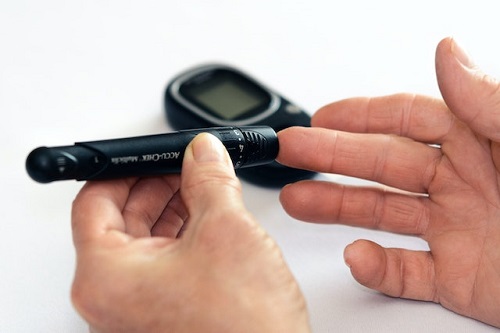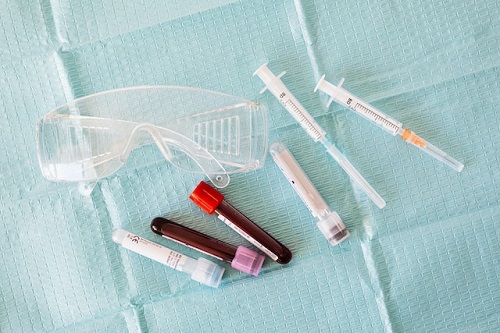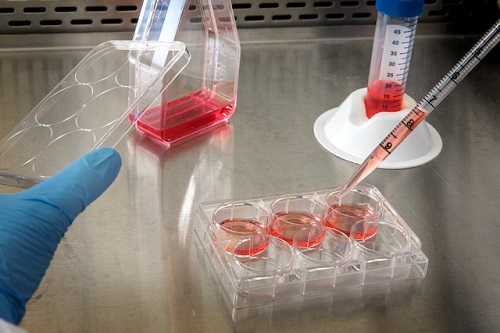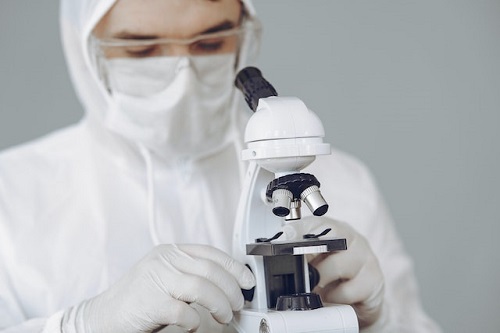EU In Vitro Diagnostic Regulation (IVDR): Frequently Asked Questions
The regulatory landscape in Europe is changing.
In 2021, the new medical device regulation was implemented; in 2022, it was time for the in vitro diagnostic regulation.
While the medical device regulation did not suffer significant or overwhelming changes, the in vitro diagnostic medical device regulation introduced radical changes, leaving the medical device industry with many unresolved questions.
Today we are looking at the most frequently asked questions concerning in vitro diagnostic medical devices, the IVDR, notified bodies, previous in vitro diagnostic device regulations, and everything in between. Let’s Begin.
What is an IVD?

IVD stands for In Vitro Diagnostic device. According to the IVDR (more on that below),
an IVD is any medical device that is a reagent, reagent product, calibrator, control material, kit, instrument, apparatus, piece of equipment, software, or system, whether used alone or in combination.
It is the purpose of IVDs to examine specimens derived from the human body that, include blood and tissue donations, in order to provide information about one or more of the following:
- a physiological or pathological process or state
- congenital physical or mental impairments
- the predisposition to a medical condition or a disease
- Assessing the safety and compatibility of potential recipients
- Analyzing treatment responses or reactions
- Defining or monitoring therapeutic measures
A specimen receptacle shall also be considered an in vitro diagnostic medical device.
In vitro diagnostic medical devices include pregnancy tests, HIV tests, COVID tests, blood glucose tests, genetic tests, etc.
What is the IVDR?
The IVDR is the current In Vitro Diagnostic Regulation (2017/746) in the European Union.
The IVDR lays down rules regarding placing In Vitro Diagnostic medical devices on the EU market.
It also applies to performance studies for IVDs and their accessories.
It is important to note that the IVDR does not apply to:
- Products for general laboratory use or research-use only products, unless such products, given their characteristics, are specifically intended by their manufacturer to be used for in vitro diagnostic examination;
- Invasive sampling products or products which are directly applied to the human body to obtain a specimen;
- Internationally certified reference materials;
- Materials used for external quality assessment schemes.
Medical devices, such as X-ray equipment, cannulas, CPAP machines, implants, etc., cannot be considered IVDs and are thus not covered by the IVDR.
IVDR vs. MDR

As the IVDR is the EU In Vitro Diagnostic Device Regulation, the MDR (2017/745) is the EU Medical Device Regulation.
The MDR applies to medical devices, defined in the MDR as
“…any instrument, apparatus, appliance, software, implant, reagent, material or other article intended by the manufacturer to be used, alone or in combination, for human beings for one or more of the following specific medical purposes:
- Diagnosis, prevention, monitoring, prediction, prognosis, treatment, or alleviation of disease,
- Diagnosis, monitoring, treatment, alleviation of, or compensation for, an injury or disability,
- Investigation, replacement, or modification of the anatomy or a physiological or pathological process or state,
- Providing information using in vitro examination of specimens derived from the human body, including organ, blood, and tissue donations
and which does not achieve its principal intended action by pharmacological, immunological, or metabolic means in or on the human body but may be assisted in its function by such means.

Furthermore, devices used to control or support contraception and products for cleaning and disinfecting medical devices are also considered within the MDR.
Regarding the content of the two regulations, in vitro diagnostic medical devices and medical devices are subject to the exact requirements for all intents and purposes.
What is the difference between the IVDD and the EU IVDR?
The IVDR replaces the previous in vitro diagnostic regulation Directive 98/79 EC and Commission Decision 2010/227/EU.
Directive 98/79 EC was implemented in 1998 and had become obsolete regarding regulatory landscape and technologies.
What are the changes from the IVDD to the IVDR?
The IVDR has significantly expanded several critical aspects of the IVDD.
Scope
The IVDR includes many more devices than the IVDD does.
Diagnostic services, genetic testing, tests that provide information about a patient’s disposition for a specific disease or susceptibility to a particular treatment, and high-risk devices manufactured in a single institution are new additions to the in vitro diagnostic device regulation.
Classification
The IVDR implements a classification system consistent with that of the International Medical Device Regulators Forum (IMDRF).
Classification is based on risk and ranges from Class A low-risk devices to Class D high-risk devices.
By some estimates, up to 80% of IVDs on the market will be classified as Class B.

Notified body involvement
As mentioned, the IVDR requires notified bodies to perform conformity assessment for approximately 90% of in vitro diagnostic medical devices compared to 15% under the IVDD.
Only Class A non-sterile devices can be self-certified under the IVDR.
Due to the high demand for IVD conformity assessment, the notified body capacity is currently in high demand.
A person responsible for regulatory compliance
Under the IVDR, manufacturers who produce in vitro diagnostic medical devices must appoint at least one person responsible for compliance with the regulation.
The person responsible for regulatory compliance must document the qualifications that make them suitable for the tasks required.
Unique Device Identification – UDI
The UDI system is a mandatory traceability tool to ensure individual devices can be traced through the supply chain.
This is critical for recalls or field safety corrective actions (FSCA) of IVDs that present a safety risk.
No grandfathering
IVDs that comply with the IVDD must be re-certified to the IVDR. There is no “grandfathering” permitted.
Technical documentation
The requirements for technical documentation have been dramatically increased.
Clinical performance studies and evidence of safety and performance requirements according to the risk class of the device are now an essential part of IVD compliance.
Similar to that collected during PMS activities for medical devices, post-market performance data must be collected to assess potential safety risks.
Vigilance
PMS and vigilance in the IVDD were hard to distinguish, and the vigilance process was vaguely described.
Article 11 of the IVDD states that member states
“… shall take the necessary steps to ensure that any information brought to their knowledge [about serious incidents]… is recorded and evaluated centrally.“
In the IVDR, however, PMS and vigilance are separated, and vigilance procedures are given their due. Vigilance is described in Section 2: Vigilance of the IVDR and consists of six articles:
- Article 82-Reporting of serious incidents and field safety corrective actions
- Article 83-Trend reporting
- Article 84-Analysis of serious incidents and field safety corrective actions
- Article 85-Analysis of vigilance data
- Article 86-Implementing acts
- Article 87-Electronic system on vigilance and post-market surveillance
Vigilance procedures for IVDs are now very similar to those of medical devices and require the same documentation and follow-up.
Why is the IVDR important?
Before the IVDR requirements were enforced, IVDs did not require conformity assessment by notified bodies.
Under the IVDD, most companies could self-declare their conformity to European standards, which does not involve notified body review.
It is an independent conformity assessment performed by the manufacturer.
However, with the implementation of the IVDR, conformity assessments performed by notified bodies are mandatory for all but the lowest-class IVDs.
Compliance with the IVDR is critical to obtain CE marking for your in vitro diagnostic device.
Without it, you will not be granted market authorization to market and sell your in vitro medical devices within the European Union.

IVDR timelines – when does it apply, and what are the deadlines?
The IVDR was drafted in 2017 and started implementation on May 26th, 2022.
The implementation is staggered, meaning that some devices will have to fully implement the IVDR by 2022, while others will have until May 2027.
What are the major requirements of the IVDR?
The IVDR emphasized technical documentation and regulatory requirements for IVDs.
IVD compliance is much closer to medical device compliance and includes many of the same requirements.
To fully comply with the IVDR, manufacturers must:
- Implement a risk management system
- Implement a quality management system
- Conduct performance evaluations, including post-market performance follow-up
- Gather and continuously update their technical documentation to ensure conformity
- Implement the UDI system
- Implement post-market surveillance systems
- Ensure compliance with vigilance requirements, including recording and reporting of
- incidents
- field safety corrective actions.
If you are tackling and IVDR project already, or looking to plan a submission. Please contact us for a free strategy session and pricing proposal based on your needs.
What kind of clinical evidence is required under the IVDR?
As with any other medical devices, in vitro diagnostic medical devices also require clinical evaluation before being placed on the market.
For In Vitro Diagnostic medical devices, the clinical evaluation is done through the performance evaluation – An assessment and analysis of data to establish or verify the scientific validity, the analytical, and, where applicable, the clinical performance of a device (EU 2017/746 (IVDR), Article 2 (44)).
The Medical Device Coordination Group (MDCG) issued guidance on the general principles of clinical evidence for In Vitro Diagnostic medical devices in 2022: Guidance on general principles of clinical evidence for In Vitro Diagnostic medical devices (IVDs).
The guidance mentions the requirement in the IVDR for manufacturers to specify and justify the level of clinical evidence required based on the intended purpose of the IVD, emphasizing the importance of properly defining the intended purpose and reflecting it accurately in the Instructions for Use.
Similar to clinical evaluation for medical devices, the performance evaluation for in vitro diagnostic medical devices is a continuous process throughout the lifetime of the IVD.

Summary
In summary, the IVDR is a new beginning for in vitro device manufacturers. Unfortunately, without the option to transfer their IVD certificate, most manufacturers are forced to re-certify to the IVDR, complying with all the new requirements and processes.
The lack of approved notified bodies for IVDs is concerning, but the implementation of the IVDR is going ahead as planned.
If you need help drafting a Performance Evaluation Report, or an IVDR compliant Systematic Literature Review… our experts can help. Reach out today and book a free consult.
